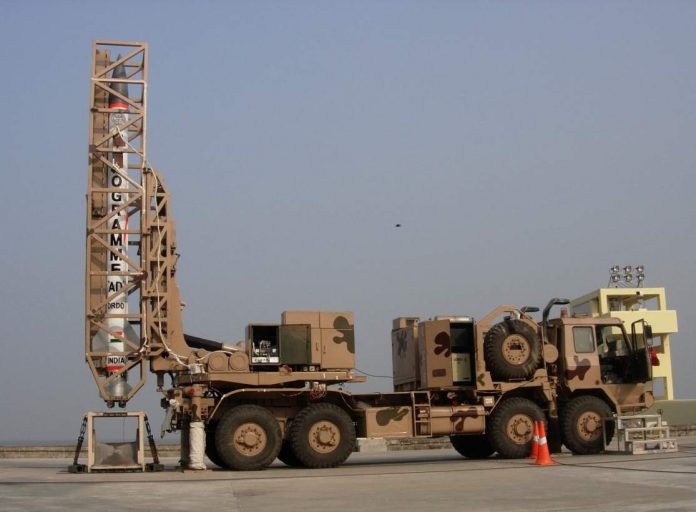India successfully test-fired its Advanced Air Defence (AAD) interceptor missile from launching complex-IV of Dhamara Abdul Kalam defence base off Odisha coast on February 11, 2017 under its Ballistic Missile Defence Programme
- The successful testing leads India towards achieving a robust two layered Ballistic Missile Defence (BMD) system. It will strengthen India’s position in the exclusive club of US, Russia and Israel.
- The Advanced Air Defence interceptor named as Ashwin has the capability to destroy the incoming enemy missile in the endo-atmospheric region at a low altitude of less than 30 kilometres.
- The AAD interceptor is a 7.5-metre-long single stage solid rocket propelled guided missile equipped with a navigation system and a high tech computer and electro-mechanical activator totally under command by the data uplinked from the ground-based radar.

- Besides, the PDV (Prithvi Defence Vehicle) inceptor missile was for engaging the targets in the exo-atmosphere region at an altitude above 50 km of earth’s atmosphere.The target was developed for mimicking a hostile incoming enemy Ballistic Missile which was launched from a ship anchored at Bay of Bengal. In an automated operation, radar based tracking system detected and tracked the hostile ballistic missile.
- The PDV inceptor missile seeks to destroy incoming enemy missiles in exo-atmospheric region while the AAD predicts to kill enemy missiles of more than 2,000 km range in inside the atmospheric region.
- The test mission named as PDV Mission aimed to develop an anti-ballistic missile (ABM) shield to protect Indian targets against nuclear-tipped ballistic missiles fired from Pakistan or China.
- The computer network with the help of data received from radars predicted the trajectory of the incoming Ballistic Missile.
- PDV that was kept fully ready, took-off once the computer system gave the necessary command for lift-off. The Interceptor guided by high accuracy Inertial Navigation System (INS) supported by a Redundant Micro Navigation System moved towards the estimated point of the interception.
- Once the missile crossed the atmosphere, the Heat Shield ejected and the IR Seeker dome opened to look at the Target location as designated by the Mission Computer.
- With the help of Inertial Guidance and IR Seeker the missile moved for interception. All events were monitored in real-time by the Telemetry/Range Stations, at various other locations.
- This is DRDO’s latest test towards developing an anti-ballistic missile (ABM) shield, to protect Indian targets against nuclear-tipped ballistic missiles fired from Pakistan or China.
About Indian Ballistic Missile Defence Programme
The Indian Ballistic Missile Defence Programme is an initiative to develop and deploy a multi-layered ballistic missile defence system to protect from ballistic missile attacks.
- The Ballistic Missile Defence Programme is a double-tiered system consisting of two interceptor missiles namely the Prithvi Air Defence (PAD) missile for high altitude interception, and the Advanced Air Defence (AAD) Missile for lower altitude interception.
- It was developed to fight against the ballistic missile threat from mainly Pakistan.
- The two-tiered shield should be able to intercept any incoming missile launched 5,000 kilometres away.
- The PAD was tested in November 2006, followed by the AAD in December 2007. With the test of the PAD missile, India became the fourth country to have successfully developed an anti-ballistic missile system, after United States, Russia, and Israel
AffairsCloud Recommends Oliveboard Mock Test
AffairsCloud Ebook - Support Us to Grow
Govt Jobs by Category
Bank Jobs Notification






